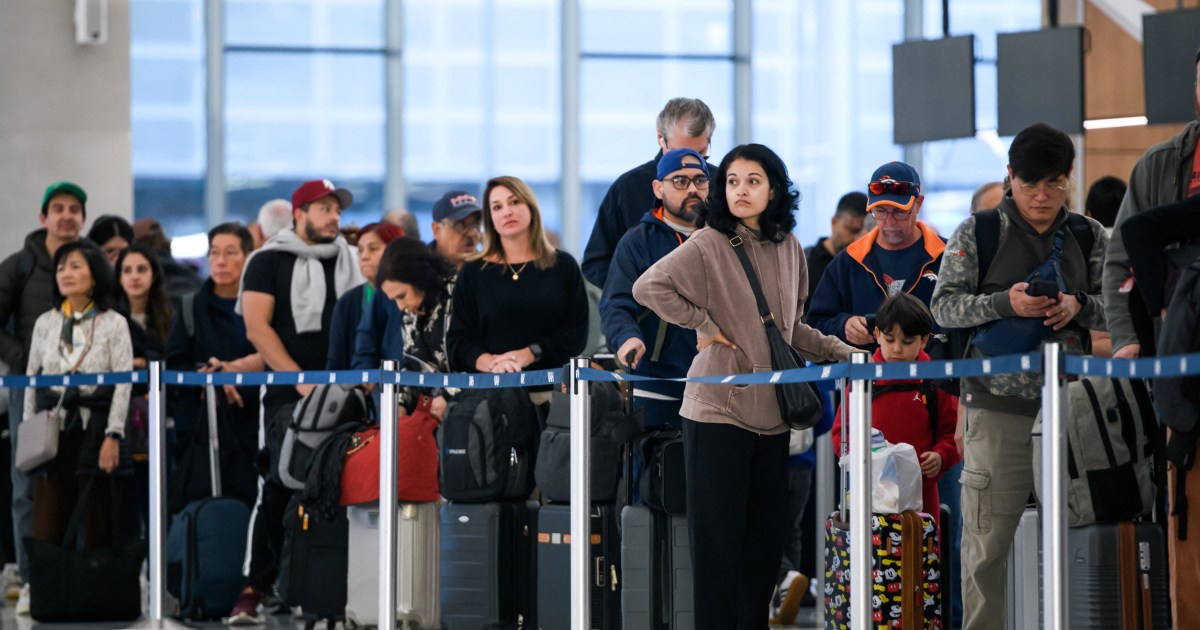The Federal Aviation Administration will begin cutting the number of flights in the “high traffic” parts of the country as the government shutdown grinds on and local airports have reported staffing shortages, Transportation Secretary Sean Duffy said Wednesday.
“There is going to be a 10% reduction in capacity at 40 of our locations,” Duffy said. “This is about where’s the pressure and how do we alleviate the pressure.”
FAA Administrator Bryan Bedford said the reduction in capacity, spurred by “fatigue” plaguing air traffic controllers, would start Friday.
The list of markets impacted will be released Thursday, he said.
Airlines were told by Department of Transportation officials Wednesday night that flight cuts would start at 4% Friday, 5% Saturday and ramp up to 10% next week, two airline sources told NBC News, confirming a report from Reuters.
Space launches and VFR traffic, common for small aircraft, will also be impacted in the reduction, Bedford said.
Duffy and Bedford highlighted the building pressure and fatigue weighing on air traffic controllers, who have been working without pay because of the government shutdown.
“We do recognize that the controllers have been working fastidiously for the last five weeks with this huge burden over their head of lack of compensation, and we are starting to see some evidence that that fatigue is building in the system,” Bedford said.
Bedford said the agency is not waiting for the situation to get worse. “We just can’t ignore it,” he said.
He said additional measures may be taken if the pressures continue.
The development comes as the shutdown has entered its second month and in the wake of a weekend during which dozens of American airports reported hundreds of delays.
More than 5,000 flights traveling from and to U.S. airports were delayed on Sunday alone, and the Transportation Security Administration said it screened nearly 2.7 million people around the country.
And on Monday evening, there were 2,885 delays on flights traveling within, to and out of U.S. airports and 70 more were canceled, according to FlightAware.com.
Hardest hit were travelers flying in and out of Chicago O’Hare International Airport, Newark Liberty International Airport, John F. Kennedy International Airport and Hartsfield-Jackson Atlanta International Airport, with more than 900 delays and 35 cancellations between them.
The number of cancellations doubled to 148 Tuesday, while the number of delays dipped somewhat to 2,133, the website reported. There were over 2,100 delays as of Wednesday evening and 164 cancellations among flights within, into, or out of the U.S., according to FlightAware. The website does not provide the reason for the delays.
The shutdown has meant that essential workers, including air traffic controllers, have been working without pay. That has led to a shortage of anywhere from 2,000 to 3,000 controllers, Duffy has previously said.
Duffy acknowledged that some air traffic controllers have taken to side gigs to make ends meet as they’ve gone a month without pay.
“What we’re finding is that our air traffic controllers, because of the financial pressures at home, are taking side jobs,” Duffy said. “By the way, I do not want them to take side jobs. I want them to show up for work. We have asked them to show up for work, but I’m not naive to understand that they’re trying to figure out how they meet their daily obligations.”
Asked if the reduced traffic would continue if the shutdown hypothetically ended tomorrow, Bedford said: “I think what we’re going to want to see is a return to controller performance that’s at levels that we were experiencing prior to the shutdown.”
Aviation officials will meet with the airline community Wednesday evening “about how we’ll move to implementation,” Bedford said.
“We want to do this in an organized way,” he said.
United Airlines’ CEO Scott Kirby said the schedule reduction will impact regional flights and domestic mainline flights that do not travel between United hubs. Long-haul international flights and hub-to-hub flights won’t be impacted, in part to “sustain our crew pairing systems,” he said in a letter to employees Wednesday.
He noted that customers traveling during this period are eligible for a refund if they do not wish to fly, even if their flight isn’t impacted due to the schedule reduction. Still, even with the cuts, United and United Express partners will still see about 4,000 flights per day, he said.
American Airlines said in a statement that it expects “the vast majority of our customers’ travel will be unaffected.”
Airlines for America, a trade association and lobbying group, said Wednesday it’s working with the federal government to “understand all details of the new reduction mandate” and will try to “mitigate impacts to passengers and shippers.”











